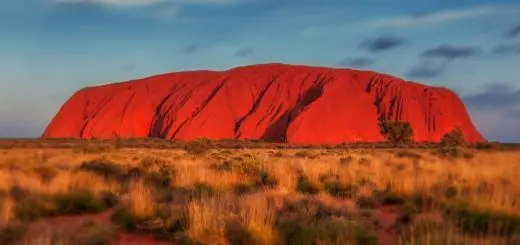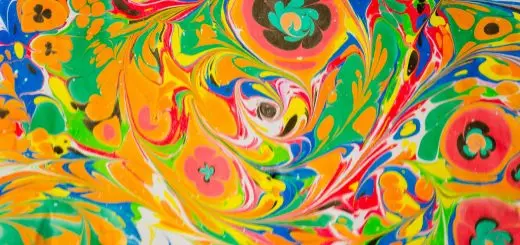Mystic Machu Picchu: Unlocking Ancient Secrets in the Andes

Looking for more amazing products? Check out our online store and explore our collection here! Happy shopping!
Before diving in, please note: This post is for informational purposes only. If you’d like to know more about how we approach topics, feel free to check out our friendly Disclaimer Page.
Hey there, amazing readers! 
We’re committed to delivering quality posts, and your support (even just sticking around despite the ads) means everything to us. So, bear with us, and thanks for helping us keep the good vibes rolling. Now, on to the fun stuff!
TRANSLATE BUTTON AT THE END OF THE ARTICLE
Overview
Machu Picchu, the mystical ancient city nestled high in the Andes mountains of Peru, continues to captivate and intrigue visitors from all around the world.
This UNESCO World Heritage site is renowned for its incredible architecture, breathtaking views, and enigmatic history.
Unlocking the secrets of Machu Picchu has been a journey of discovery, revealing the advanced knowledge and ingenuity of the Inca civilization.
In this article, we will delve into the history, geography, architecture, religious beliefs, and intriguing mysteries that surround this awe-inspiring ancient site.
History of Machu Picchu: A Lost City Rediscovered
Machu Picchu was built in the 15th century by the Inca civilization, led by their emperor Pachacuti.
However, the city’s existence remained unknown to the outside world until its rediscovery in 1911 by American historian Hiram Bingham.
The purpose of Machu Picchu, whether it served as a fortress, a retreat for the Inca elite, or a ceremonial center, is still a topic of debate among experts.
Nevertheless, its abandonment and subsequent overgrowth by the surrounding jungle suggest that it was abandoned shortly after its construction.
Geography and Location of Machu Picchu
Situated in the eastern slope of the Andes, Machu Picchu overlooks the Urubamba River valley in southern Peru.
The city is strategically positioned between two mountain peaks, Huayna Picchu and Machu Picchu Mountain, offering breathtaking panoramic views.
Its location at an elevation of around 7,970 feet (2,430 meters) contributes to its awe-inspiring atmosphere and also presents challenges for its construction and preservation.
The Enigmatic Architecture of Machu Picchu
One of the most remarkable features of Machu Picchu is its impressive architecture.
The city is divided into two main areas: the agricultural sector, consisting of terraces and agricultural fields, and the urban sector, comprising houses, temples, and various structures.
The buildings were constructed using a technique known as “ashlar,” where large stones are carefully cut to fit together without the use of mortar.
This precision engineering allowed the structures to withstand the test of time, surviving earthquakes and other natural disasters.
Discovering the Purpose of Machu Picchu’s Buildings
While the exact purpose of each building in Machu Picchu remains a mystery, archeologists have made significant progress in understanding their functions.
The Temple of the Sun, for example, is believed to have served as an astronomical observatory and a place for religious ceremonies.
The Intihuatana, a stone structure believed to have held a cosmic connection, was likely used for astronomical observations and rituals.
Other buildings, such as the Royal Tomb and the Temple of the Condor, are thought to have had religious and ceremonial significance.
The Sacred Intihuatana Stone: A Cosmic Connection
The Intihuatana stone, meaning “Hitching Post of the Sun” in Quechua, is a central feature of Machu Picchu.
This stone pillar served as an important astronomical instrument for the Inca civilization.
Through its shadow, the Inca priests could determine the solstices and equinoxes, aligning themselves with the cosmic cycles.
The belief in the sacred connection between the sun and the land played a significant role in Inca religious practices, and the Intihuatana stone was a focal point for these rituals.
Unraveling the Mysteries of Machu Picchu’s Terraces
The agricultural terraces of Machu Picchu are a testament to the advanced engineering skills of the Inca civilization.
These terraces were carefully constructed to prevent erosion and maximize agricultural productivity.
The soil was layered with gravel and sand to improve drainage, while retaining walls prevented soil erosion during heavy rainfall.
The terraces also had a microclimate effect, creating different temperature zones that allowed the cultivation of a variety of crops.
The Intricate Stone Masonry Techniques of Machu Picchu
The stone masonry techniques employed in Machu Picchu are a marvel of Inca craftsmanship.
The precision with which the stones were cut and fitted together is still a subject of awe and wonder.
The stones were shaped using harder rocks, such as basalt or diorite, and then manually hammered into their desired shapes.
These perfectly fitting stones were then placed together without the use of mortar, creating seamless and structurally stable buildings.
Religion and Beliefs of the Inca Civilization at Machu Picchu
Religion and spirituality were central to the Inca civilization, and Machu Picchu reflects their deep reverence for the natural world.
The Incas believed in an array of gods and goddesses, with Inti, the sun god, considered the most important deity.
Machu Picchu, with its celestial alignments and sacred structures, was likely a place of religious pilgrimage and worship.
The religious significance of the site is further emphasized by its hidden location, high in the mountains, away from the prying eyes of outsiders.
Machu Picchu’s Astronomical Alignments: A Celestial Connection
The Inca civilization had a profound understanding of astronomy, and the layout of Machu Picchu reflects this knowledge.
Many of the city’s structures align with astronomical events, such as solstices and equinoxes.
The Intihuatana stone, for instance, casts no shadow during the two equinoxes, symbolizing the unity between the sun and the earth.
These alignments suggest that Machu Picchu served not only as a religious and ceremonial center but also as an astronomical observatory.
The Importance of Water in Machu Picchu’s Design
Water played a vital role in the design and functionality of Machu Picchu.
The city’s layout incorporated a sophisticated water management system, consisting of canals, fountains, and baths.
The Incas understood the importance of water for agriculture and incorporated it into their religious and spiritual practices as well.
The sacred fountains of Machu Picchu suggest that water was viewed as a source of life and purity, and the Inca priests likely performed rituals involving water.
Controversial Theories and Debates Surrounding Machu Picchu
As with any ancient site shrouded in mystery, Machu Picchu has its fair share of controversies and theories.
Some theories suggest that Machu Picchu served as a royal retreat for the Inca emperor, while others propose that it was a center for scientific knowledge and astronomical study.
There are also theories surrounding the purpose of certain structures, such as the Temple of the Sun or the Intihuatana stone.
Debates also arise around the function of the agricultural terraces and the role of water in the city’s design.
These ongoing discussions keep the intrigue alive and continue to inspire further research and exploration.
Conclusion
Machu Picchu remains a remarkable testament to the ingenuity, spirituality, and advanced knowledge of the Inca civilization.
Its awe-inspiring architecture, celestial alignments, and intricate water management systems continue to fascinate visitors and researchers alike.
While many of its secrets have been unlocked, Machu Picchu still holds mysteries yet to be fully understood.
As we continue to explore and delve deeper into this ancient city, we gain a greater appreciation for the rich history and culture of the Inca civilization.

The Enlightenment Journey is a remarkable collection of writings authored by a distinguished group of experts in the fields of spirituality, new age, and esoteric knowledge.
This anthology features a diverse assembly of well-experienced authors who bring their profound insights and credible perspectives to the forefront.
Each contributor possesses a wealth of knowledge and wisdom, making them authorities in their respective domains.
Together, they offer readers a transformative journey into the realms of spiritual growth, self-discovery, and esoteric enlightenment.
The Enlightenment Journey is a testament to the collective expertise of these luminaries, providing readers with a rich tapestry of ideas and information to illuminate their spiritual path.
Our Diverse Expertise
While our primary focus is on spirituality and esotericism, we are equally passionate about exploring a wide range of other topics and niches 

To ensure we provide the most accurate and valuable insights, we collaborate with trusted experts in their respective domains 
Our blog originally focused on spirituality and metaphysics, but we’ve since expanded to cover a wide range of niches. Don’t worry—we continue to publish a lot of articles on spirituality! Frequently visit our blog to explore our diverse content and stay tuned for more insightful reads.
Hey there, amazing reader! 
Check out our store here and take a peek at some of our featured products below! Thanks for being awesome!










